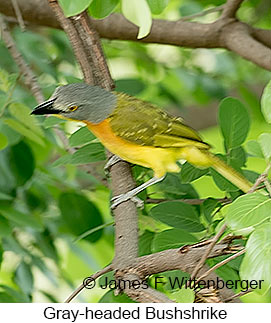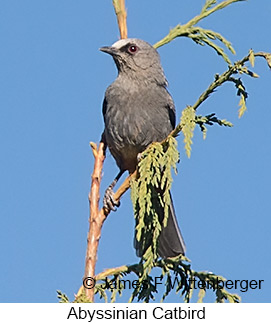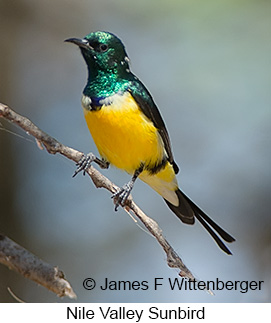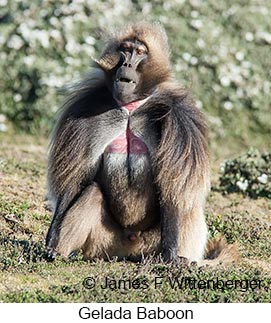ABOUT ETHIOPIA BIRDING

AFRICA
ETHIOPIA
| # Species: | 883 |
| # Excl Vagrants: | 850 |
| # Endemics: | 22 |
| # Near Endemics: | 25 |
 Ethiopia is a land of contrasts. Large cities are teeming with traffic and seem to be very affluent. Yet, outside the large cities, Ethiopia is very much a third world and quite impoverished country. Few rural people can afford cars. Most walk or use carts pulled by horses, donkeys, mules, or rarely oxen for transport. Most traffic outside cities and villages consist of trucks, so roads are not generally busy unless one encounters the occasional religious caravan, which may involve thousands of people walking to an event and clogging up the road. The condition of roads is improving with widespread construction underway in the south, though some new roads are already developing potholes due to use of shoddy asphalt.
Ethiopia is a land of contrasts. Large cities are teeming with traffic and seem to be very affluent. Yet, outside the large cities, Ethiopia is very much a third world and quite impoverished country. Few rural people can afford cars. Most walk or use carts pulled by horses, donkeys, mules, or rarely oxen for transport. Most traffic outside cities and villages consist of trucks, so roads are not generally busy unless one encounters the occasional religious caravan, which may involve thousands of people walking to an event and clogging up the road. The condition of roads is improving with widespread construction underway in the south, though some new roads are already developing potholes due to use of shoddy asphalt.
In terms of birding, Ethiopia is a fascinating country with variable habitat that includes mountains, the Rift Valley, fresh water and alkaline lakes, dry scrub, dry open woodlands, and in the south greener, more lush forests. The highlands offer endless scenic grandeur consisting of canyons, valleys, mountainous escarpments, and plateaus. The country features over 850 birds including some 30 endemic and near endemic species. Many birds tend to be rather unwary because they have not been hunted or disturbed by the local population. Birding and bird photography are generally easy for this reason along with the openness of most habitats. The country also features a number of interesting mammals including specialties such as the Ethiopian Wolf, Mountain Nyala, and both Hamadryas and Gelada Baboons. Accommodations vary in quality but are acceptable to most western travelers and are much improved compared to earlier years. It's not necessary to stay in extremely basic accommodations that one might encounter in certain parts of Asia. As an added bonus, birding sites are not overrun with birding groups, offering an all-around superb experience in this core birding destination.
 Virtually all birding tours involve a circuitous route north, east, and south of Addis Ababa in the central part of the country. The extreme east borders on Somalia, is extremely dry, and offers nothing much new in the way of birding beyond the Degodi Lark, which is best considered a subspecies of Gillett's Lark. The mountainous west and northwest including the Semien Mountains are quite inaccessible short of trekking due to a lack of roads. All endemics can be found in the central part of the country. Primary destinations are the Ankober Escarpment and adjoining plateau and highlands north of Addis Ababa, various sites in the Rift Valley to the east and south of Addis Ababa including Aledeghi Wildlife Reserve and Awash National Park in the east and the lakes region, Negele, and Yabelo in the south, and highlands south of Addis Ababa including Bale National Park, Gibe Sheleko National Park, and Wondo Genet. A route including those sites allows viewing of all endemic and near-endemic birds of Ethiopia and is likely to result in a trip list totaling more than 500 species.
Virtually all birding tours involve a circuitous route north, east, and south of Addis Ababa in the central part of the country. The extreme east borders on Somalia, is extremely dry, and offers nothing much new in the way of birding beyond the Degodi Lark, which is best considered a subspecies of Gillett's Lark. The mountainous west and northwest including the Semien Mountains are quite inaccessible short of trekking due to a lack of roads. All endemics can be found in the central part of the country. Primary destinations are the Ankober Escarpment and adjoining plateau and highlands north of Addis Ababa, various sites in the Rift Valley to the east and south of Addis Ababa including Aledeghi Wildlife Reserve and Awash National Park in the east and the lakes region, Negele, and Yabelo in the south, and highlands south of Addis Ababa including Bale National Park, Gibe Sheleko National Park, and Wondo Genet. A route including those sites allows viewing of all endemic and near-endemic birds of Ethiopia and is likely to result in a trip list totaling more than 500 species.
WHY GO BIRDING IN ETHIOPIA
 Ethiopia has become a core birding destination that features over 30 endemic and near-endemic species. The birds have never been hunted and most habitats are quite open, so birding is easy. In addition to birding, the country features scenic landscapes in the highlands and several important endemic mammals including Ethiopian Wolf, Bohor Reedbuck, Mountain Nyala, Gelada Baboon, and Hamadryas Baboon.
Ethiopia has become a core birding destination that features over 30 endemic and near-endemic species. The birds have never been hunted and most habitats are quite open, so birding is easy. In addition to birding, the country features scenic landscapes in the highlands and several important endemic mammals including Ethiopian Wolf, Bohor Reedbuck, Mountain Nyala, Gelada Baboon, and Hamadryas Baboon.
WHEN TO VISIT ETHIOPIA
 Birding tours can be fruitful almost every month of the year. However, high season is September-December. September and October are especially good months because at the end of rainy season birds are active and it's the best time of year for viewing wildlife in the highlands. By January arid regions can be very dry and bird activity lessens. Dry season persists until March. Moderate rains fall during April-May, which can be a good time for birding as many birds start breeding. The heaviest rains fall from June-August. Many birds are breeding during the rainy season, but weather can be an issue.
Birding tours can be fruitful almost every month of the year. However, high season is September-December. September and October are especially good months because at the end of rainy season birds are active and it's the best time of year for viewing wildlife in the highlands. By January arid regions can be very dry and bird activity lessens. Dry season persists until March. Moderate rains fall during April-May, which can be a good time for birding as many birds start breeding. The heaviest rains fall from June-August. Many birds are breeding during the rainy season, but weather can be an issue.
OTHER COUNTRIES
IN AFRICA
BIRDING LOCALES





